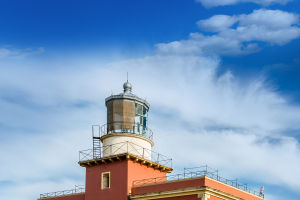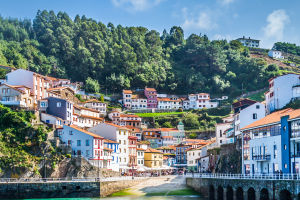The English Channel is a body of water that separates the island of Great Britain from the European continent, specifically France.
It is approximately 560 kilometers long and 240 kilometers wide. The Channel connects the North Sea and the Bay of Biscay in the Atlantic Ocean, making it an important sea passage between Western Europe and Northern Europe.
The narrowest part of the Channel is called the Dover Strait, which is only 34 kilometers wide and separates Dover, England from Calais, France. In France, the English Channel is referred to as the Strait of La Manche.
The formation of the English Channel dates back to about 8,000 years ago when the sea level rose due to the melting of glaciers after the Quaternary Ice Age. This caused the separation of the British Isles from the European continent, forming the Channel.
The Channel is located on the continental shelf and was originally connected to the European continent and the British Isles. However, over time, the land sank, and the sea level rose, leading to the separation.
The English Channel is located in the prevailing westerly wind belt, resulting in a mild and humid climate. The water temperature ranges from around 5°C in February to 16°C from August to September.
The area experiences about 800mm of precipitation annually, with even distribution across all seasons. The winter season often brings cloudy, wet, and windy weather due to frequent cyclone activity. The Channel has approximately 150 days of rain each year.
The English Channel is an international maritime shipping hub and is the busiest strait in the world for freight traffic. It sees around 200,000 ships passing through it annually, making it the world's busiest sea lane.
The main ports in the area are Portsmouth and Southampton in the United Kingdom and Le Havre and Cherbourg in France.
There are regular car ferries that operate between the ports on both sides of the Strait, but the area is often windy, choppy, and foggy, making ferry shipping inconvenient.
One of the significant developments in the area is the Channel Tunnel, which opened in the 1990s. It is a railway tunnel that connects England and France, running between Dover and Calais. The tunnel crosses the English Channel, making travel between the UK and Europe much more convenient and faster.
The Channel Tunnel, also known as the Anglo-French Cross Harbour Tunnel and Eurotunnel, is the second-longest tunnel in the world, with a length of 50 kilometers. Of this length, 39 kilometers run under the sea, and the journey through the tunnel takes about 35 minutes each way.
The tunnel is managed by Eurotunnel Technologies, however, it is burdened with significant debts owing to the high cost of construction. In addition to being a vital shipping hub, the English Channel is also home to various marine species such as whales, dolphins, seals, and seabirds. The area serves as an essential natural habitat for these creatures, making it an important location for marine conservation efforts.
Tourists who visit the English Channel can take a short ferry ride from Dunkirk or Calais to Dover, providing easy access to the rest of the UK.
Dover, located in Kent, is a historically rich and picturesque town, while London, the capital of England, is easily accessible for those who want to explore the city's rich history and culture. Other areas of England that visitors can explore include Oxford, Cornwall, and the Cotswolds.
In conclusion, the English Channel is an essential body of water that connects Western Europe and Northern Europe.
It is a significant shipping hub and sees an average of 200,000 ships passing through annually. With the Channel Tunnel, travel between the UK and Europe has become faster and more convenient.


